Let’s Talk Plywood!
I am currently sat here at Tree Tents HQ thinking about plywood, while reading about plywood as I sit at my plywood desk, surrounded by shelving made of, you guessed it, the same stuff. This simple material is very important to Tree Tents and the design of our structures. To most, reading a blog about plywood might not be of interest so while I rap my fingers on my well loved, and may I add sturdy and golden plywood desk, I am contemplating how best to ‘apply’ my efforts into making plywood an interesting subject for you to read about.
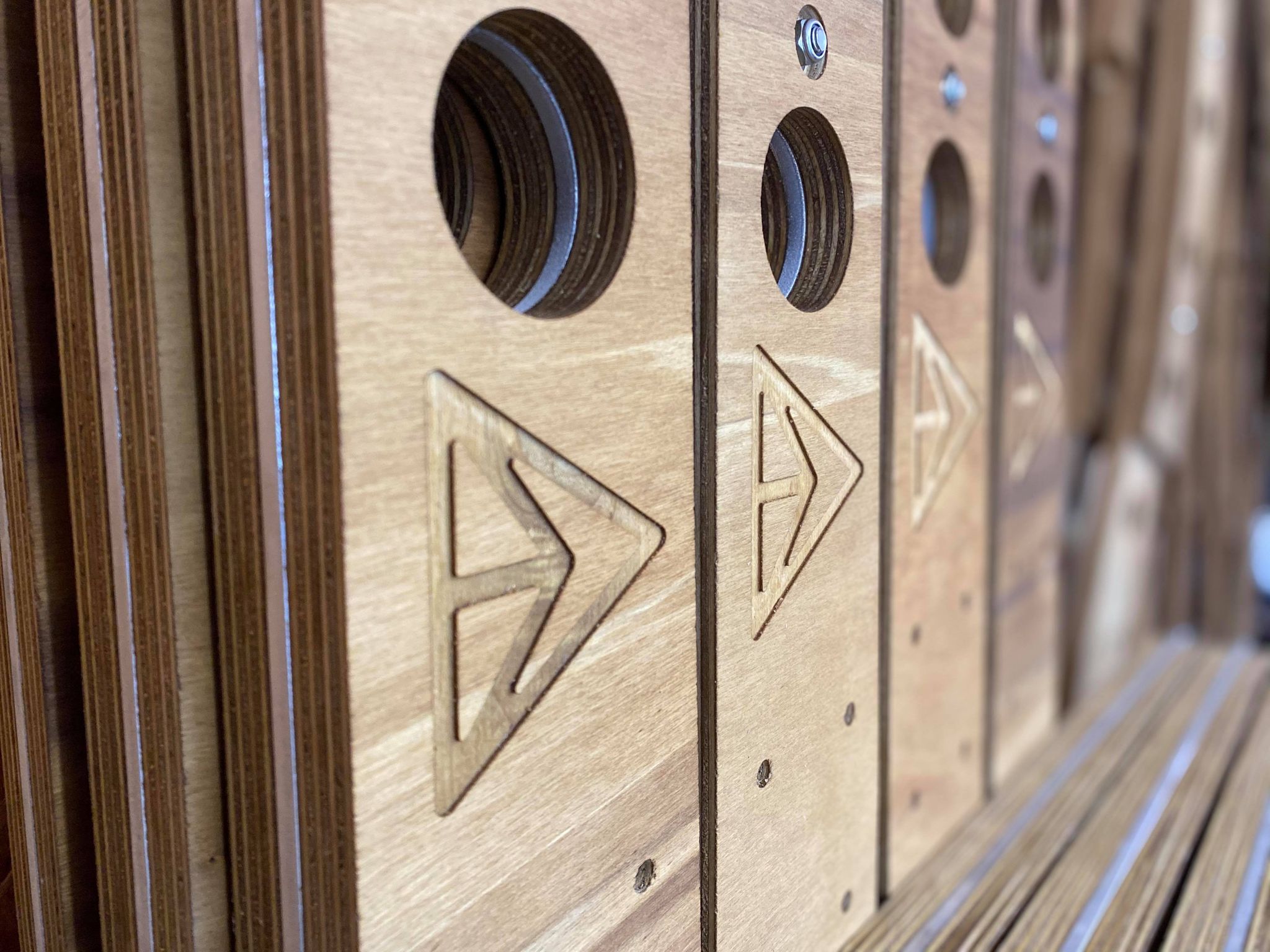
So why now is it important for us to talk about our plywood supplies?
Since Tree Tents’ inception we’ve chosen to use sustainable marine plywood sourced from Indonesia. Although this uses slow growth hardwoods, the Indonesian government, through the Forestry Department, owns and manages 3.2 million acres of plantations which provide an important environment to many wildlife species that have become established and flourished since being set up in the 1700s. These sustainable and properly managed plantations support the local economy and gives value to the land which otherwise may well be cleared for the production of an alternative crop such as palm oil.
However – with all this in mind the availability of legal and sustainable hardwoods to produce this plywood is very limited and transporting our material nearly halfway across the world has never sat well with us but it’s always been the best material for the job. With recent events in international shipping through COVID, this supply chain has shown its delicacy with sourcing and costs becoming even more volatile. As such we’ve taken a good look as to what alternative plywoods would be suitable for our structures and more so offer a more sustainable and less transported material.
Step in Spanish company Garnica. Garnica plywood is ultra-durable for outdoor use in the most demanding conditions, composed of sustainable, European plantation wood. Plywood modified using an innovative treatment renders the entire panel exceptionally durable. Immune to fungal and insect attack, even when used outdoors and in the most demanding of weather conditions.
Its CE2 + structural certificate, lightness, surface quality and ease of machining makes it perfect for our Tree Tents, as well as maximum sustainability due to its composition using fast-growing wood sourced from European plantations.
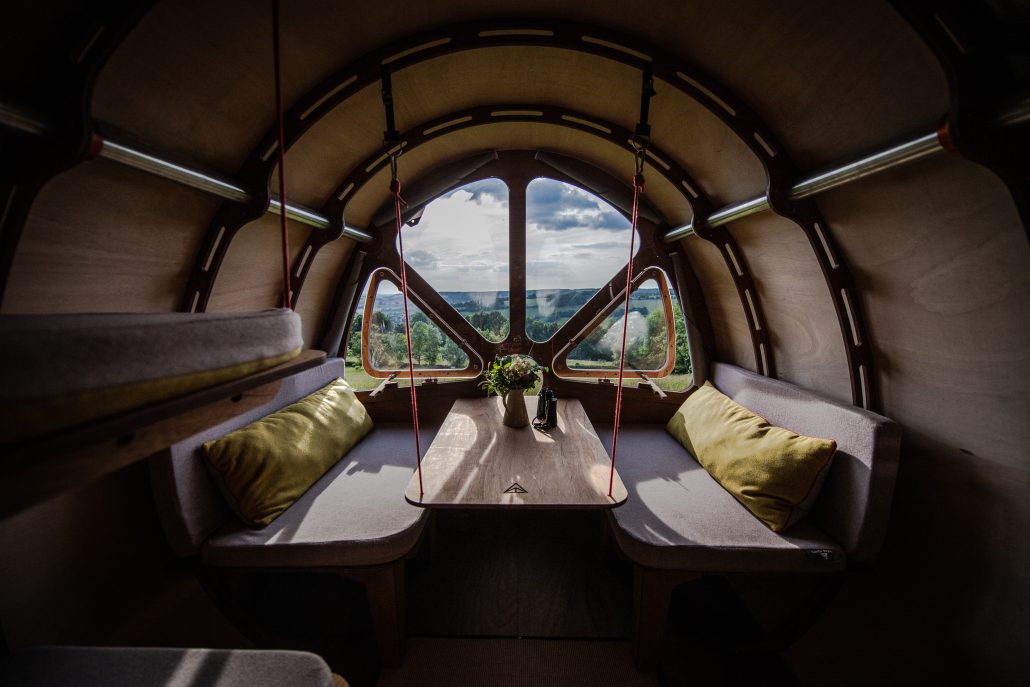
Lypiatt Hill Fuselage Interior
How is plywood made and why is it great for our structures?
Plywood is strong and I mean strong… but it’s strength does not compromise its weight, actually it is extremely light. By combining lightness, strength and flexibility means it is a highly versatile material to work with. You can use it for both interior and exterior construction.
Plywood is made by gluing together thin sheets of wood called veneers, with the grain of each sheet running in an alternate direction. This is what makes it strong and the perfect material to use for our curved beam structures where normal single direction timber would fail when cut to shape. Its durability is also pretty perfect for wilderness cabins exposed to elements and the ‘elements’ of guests.
The technique of creating plywood has been around for a very very long time, evidence of its use can be found all the way back to ancient Egypt, Greece and to the good old Romans. However it was not until the 1850s when plywood started to be used on an industrial scale.
A little side fact – The word “ply” comes from the French word plier, meaning “to fold,” a reference to the many layers that make up plywood.
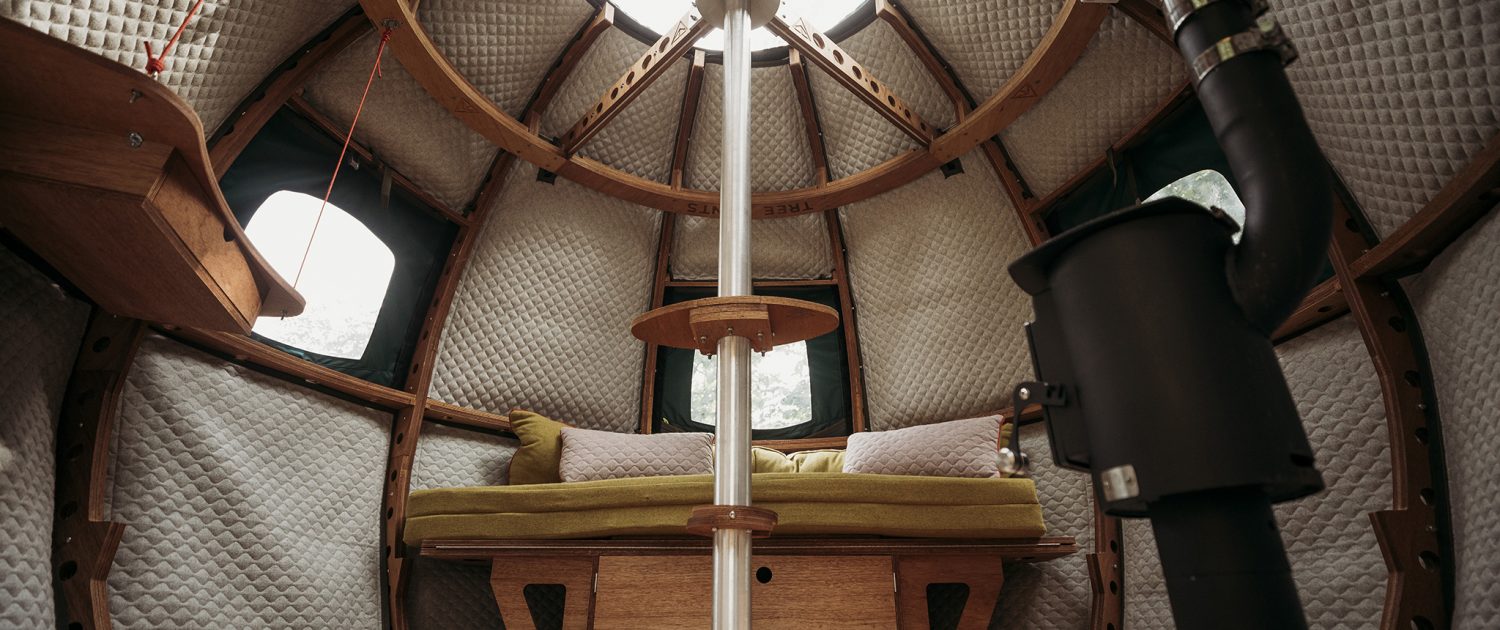
We use plywood for our lightweight Tree Tent frame. (Pennard Hill Farm Tree Tent Interior)
Plywood has been such an important material to the modern world after bursting back onto the scene 170 years ago… The V&A did a whole exhibition on plywood so it must be interesting stuff.
Here are some of its greatest hits in history:
- Moulded Plywood Furniture 1850: The most common use of plywood between 1850-1890 was moulded plywood which was mainly used in furniture making. The technique for moulding furniture with plywood was patented in 1858 by John Henry Belter. This method greatly increased the speed of manufacture and reduced production costs as chair backs could be made in batches of eight using a single mould.
- The Eames Chair: Sticking with the moulded theme; a great, and probably the best known example of moulded plywood is The Eames Chair. One of the most influential chairs of the mid – late 20th century and designed by the famous American designers Charles and Ray Eames. They also developed a lightweight, stackable plywood leg splint for the armed forces during the Second World War which is a great example of the versatility of plywood.
- Ernest Shackleton’s Antarctic Expedition: Plywood boards started to be made on a large scale from the 1880s. Plywood packing cases were used on Ernest Shackleton’s Antarctic expedition, 1907-09 and was chosen for its lightness and strength to help carry provisions and equipment in over 2500 cases. The plywood cases were good enough to withstand the extreme weather conditions. These cases were also made into furniture by the crew while on the expedition. If plywood can tackle an arctic expedition then it can tackle any wilderness we place our structures in!
- Aeroplane Design: Impressively plywood was used as a material for aeroplane design. Its strength and lightness allowed for the construction of radical new planes that revolutionised the nature of flight. In the early 1910s, ground-breaking experiments with moulded plywood allowed for the construction of the first enclosed, streamlined aeroplane fuselages.
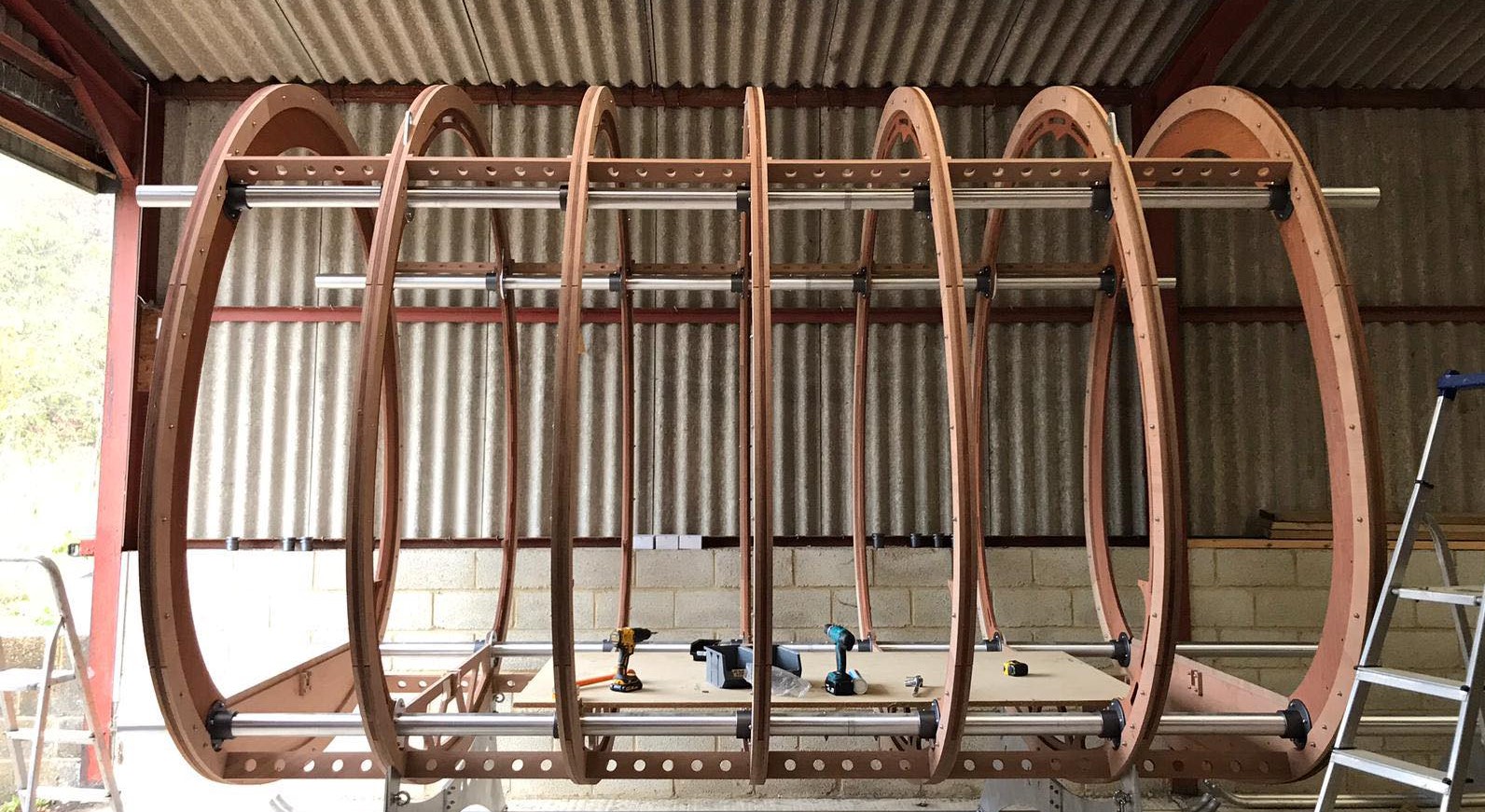
The ribs of the Fuselage
So back to the plywood we source
As mentioned above, Garnica uses wood sourced from fast-growing plantations and sustainably-managed forests with PEFC and FSC® certification to guarantee responsible management.
What does PEFC and FSC® certification mean?
FSC (Forest Stewardship Council) ensures that products come from responsibly managed forests that provide environmental, social and economic benefits. The FSC Principles and Criteria provide a foundation for all forest management standards globally.
While PEFC (Programme for the Endorsement of Forest Certification) is a leading global alliance of national forest certification systems.
It is very important at Tree Tents that we source sustainable materials that have minimum impact on the environment. We really want to help protect the future habitats of our forests and woodlands.
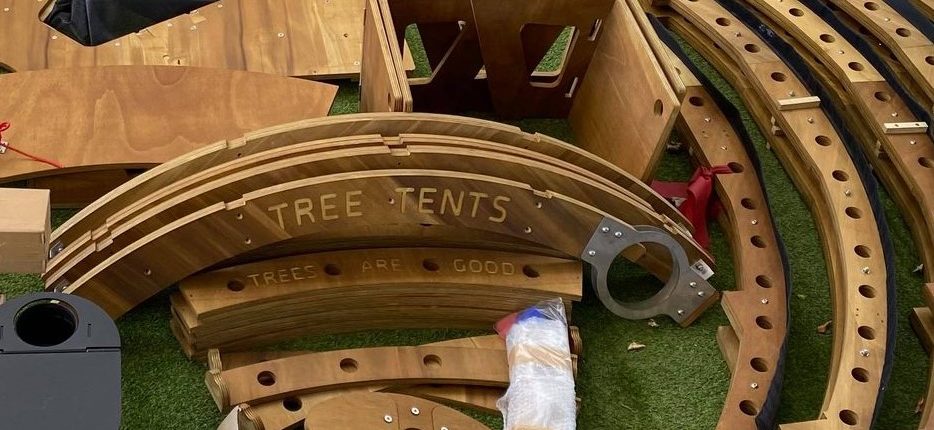
Tree Tent parts made from our new supply of plywood
We’ve already made two Tree Tents with this new plywood and we’re really pleased with the results and looking forward to many more amazing structures using this amazing and versatile material.
Lastly, I hope we have opened your eyes to the wonderful world of plywood.
If you are interested for more information on our structures please get in touch with the Tree Tents team by emailing info@treetents.co.uk






